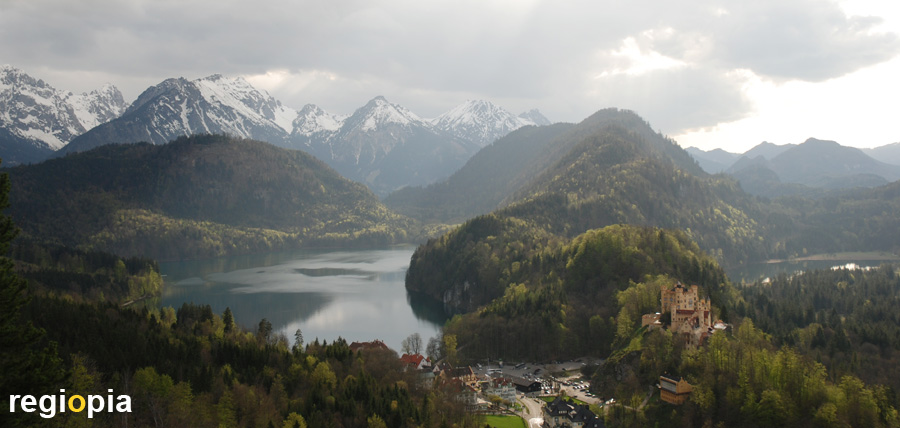
Hohenschwangau Castle
Hohenschwangau Castle is located in a magnificent natural setting near Füssen in Bavaria. It was built by the Knights of Schwangau, whose actual castle stood where Neuschwanstein Castle is today. Hohenschwangau Castle was first mentioned in 1397. Duke Albrecht V of Bavaria bought the castle in 1567. In 1832 King Maximilian II bought the Castle. The new owner had the castle rebuilt in neo-Gothic style. The royal family use the property as a summer residence. Ludwig II spent a lot of time here during the construction of Neuschwanstein. Hohenschwangau Castle is the yellow structure on the right side of the photo.
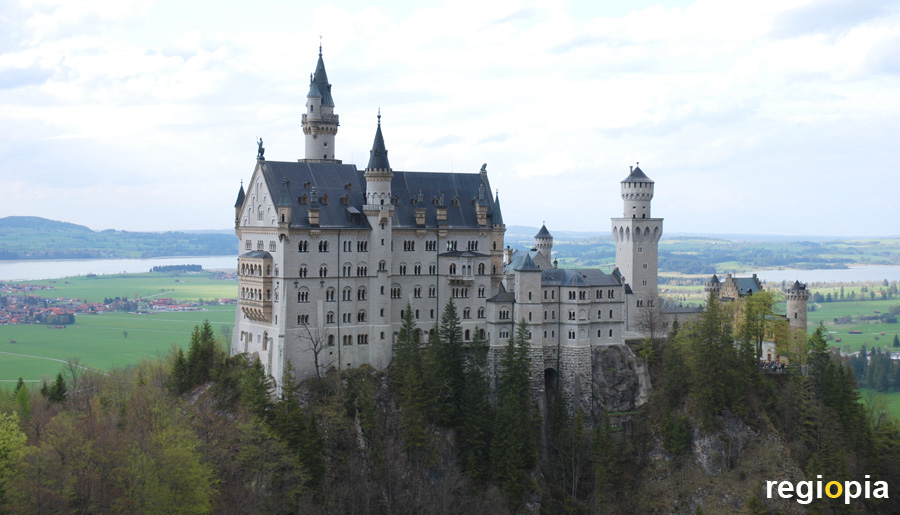
Neuschwanstein Castle
Neuschwanstein Castle sits enthroned on a rock above the city of Füssen with a view of the Forggensee. Neuschwanstein is one of the most famous sights in Germany. The "fairytale castle" was built by King Ludwig II from 1868 onwards. The castle was built above Hohenschwangau Castle and is reminiscent of a medieval castle with pointed towers and battlements. The Wartburg in Thuringia served as a model.
However, the King of Bavaria did not live to see the completion of his palace. In 1866 Bavaria had lost the war against Prussia alongside with Austria. Ludwig II considered abdicating. Since he did not do so, he was incapacitated by the Bavarian government in 1886. Another reason was the Neuschwanstein Castle and its high construction costs, which caused the king to be heavily in debt. Even though he bore the construction costs himself, not the Bavarian state treasury. In the same year the Bavarian king drowned in the Starnberger See. It has not yet been clarified whether it was suicide or someone helped.
After the king's death, only the parts of the castle that had already been started were completed. Only 15 of the 200 rooms were completed. The rooms worth seeing include the throne hall and the singers' hall.
For opening times and admission prices see the link.
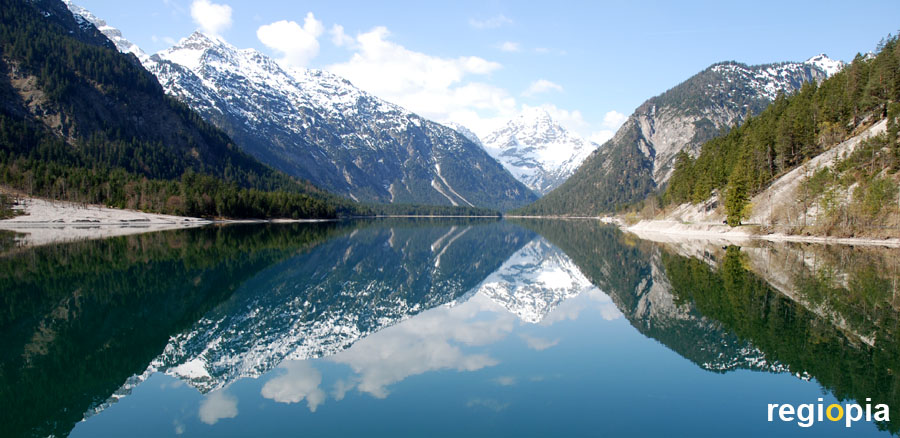
Plansee
The Plansee is located in the neighboring country of Austria in the state of Tyrol. If you drive from Füssen to the Bavarian Ettal, you will pass this beautiful lake. The Plansee is at an altitude of 976 m and has a water surface of around 280 hectares. There is no town on the lake, the nearest town is Reutte at the river Lech. The lake impresses with its clear water surrounded by high mountains and pine forests. The Plansee has a maximum water depth of 78 m. The lake is most beautiful in spring, when there is still snow on the surrounding mountains. At Plansee there are two campsites with a beach, several hotels and restaurants.
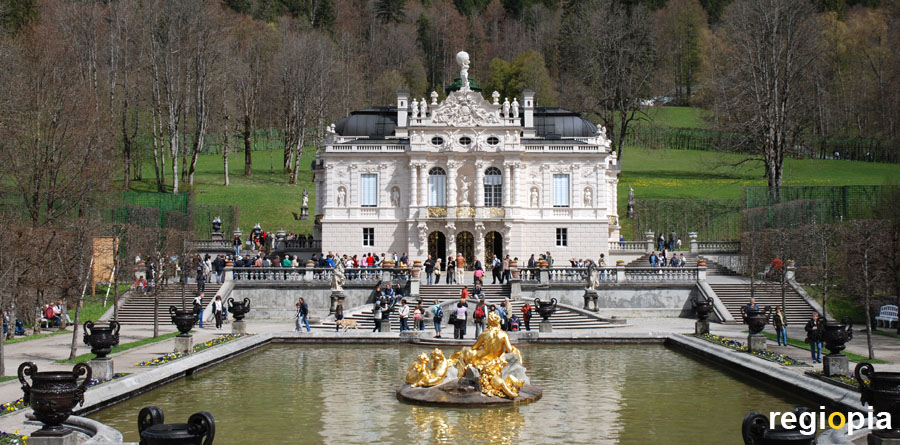
Linderhof Palace
Ludwig II's castle is located in the Ettal, north of Garmisch-Partenkirchen and about 85 kilometers south of Munich. Linderhof Palace was built from 1870 by King Ludwig II of Bavaria. The fairytale king spent a lot of time here. The palace and garden were built in the Rococo style. Around 1870 classical style was the predominat style in Germany, the rococo was an architectural style that had its heyday around 1750. King Ludwig II was a romantic dreamer who reveled in the past. Linderhof Palace is playful, there are grottos, a temple of Venus, a cascade with a Neptune fountain, a Moorish kiosk, a peacock throne, arcades, a Moroccan house, a hermitage and many other curiosities.
The park in the style of an English landscape garden does not follow the baroque models, only the central north-south axis shows absolute power. Linderhof is not big and monumental, the castle doesn't want to impress. Ludwig II came to power in 1864 at the age of 19. He was still very young and obviously overwhelmed with his new position. In 1866 he lost the war against Prussia. He was not an experienced warlord and not a shrewd politician, he preferred to take refuge in fantastic building projects. For this he left behind beautiful castles for posterity.
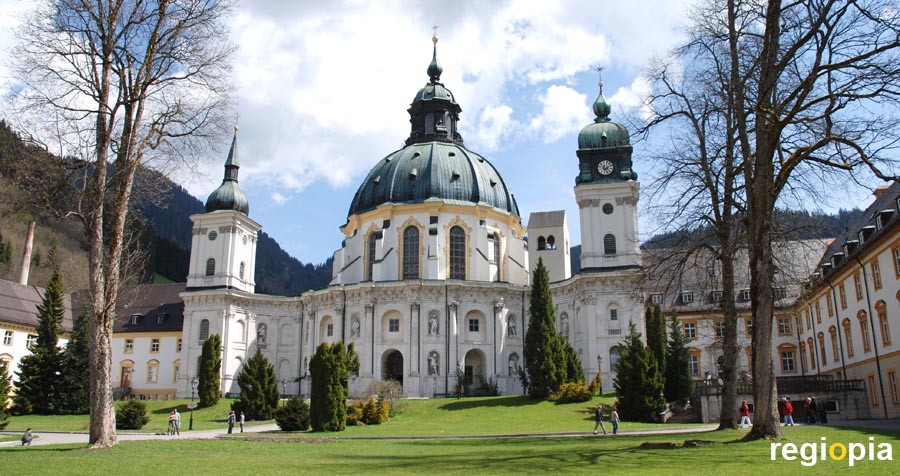
Ettal Abbey
Ettal Abbey is located on the Via Imperii between Augsburg and Verona. This important trade road should be secured by the abbey. Emperor Ludwig IV founded the Benedictine monastery in 1330 for this reason. The monastery also had an order of knights to defend the road. From his coronation in Italy, the German Emperor also brought a painting of the Virgin Mary with him to Ettal. This Ettaler Madonna attracted pilgrims who brought in money for the monastery. The first buildings of the monastery were built in the Gothic style.
In 1710 the knight academy was founded. A military school was added to the monastery. Weapons technology and the building of fortresses were taught here. The new buildings were built in the Baroque style by the Swiss architect Enrico Zuccalli when he lived in Ettal Abbey from 1706-1714. After the fire of 1744, the monastery was rebuilt according to Zuccalli's plans. Since the architect died in 1724, Joseph Schmuzer took on this task.
In 1803 the monastery was dissolved and auctioned in the course of secularization. It was not until 1900 that monks moved into the monastery again. Ettal Abbey now operates a brewery, a hotel, a shop and a school.
The richly decorated dome of the Basilica of the Assumption and the portrait of the Ettal Madonna are among the monastery sights.
Kaiser-Ludwig-Platz 1, 82488 Ettal
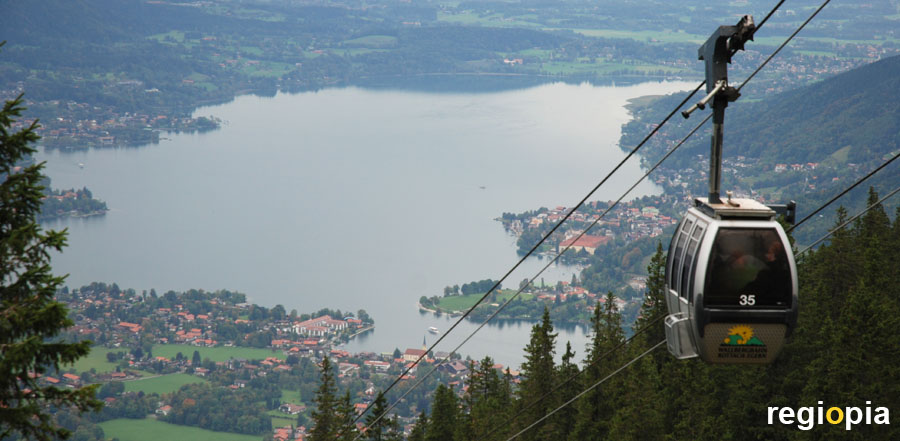
Tegernsee
The Tegernsee is a popular excursion destination for Munich residents because the lake is only around 45 kilometers away. The lake is located exactly on the northern border of the Alps and can be reached quickly by car and train. The Tegernsee has a water surface of around 9 km² and is 5.7 km long and 2.1 km wide. At the northern end of the lake is the town Gmund, at the southern end Rottach-Egern. The main attraction, the Tegernsee Monastery, is located in the town of Tegernsee. Bad Wiessee is located on the west bank of the lake.
All places around the Tegernsee can be reached by ship. However, the ships only operate on the lake in the summer months (see link). The Tegernsee is a popular holiday area because the lake has a very high water quality and there are many recreational opportunities around the lake. Cable cars take you to the surrounding mountains, such as the Wallbergbahn (photo). From the Wallberg you have a beautiful view of the Tegernsee and the alpine peaks of the region.
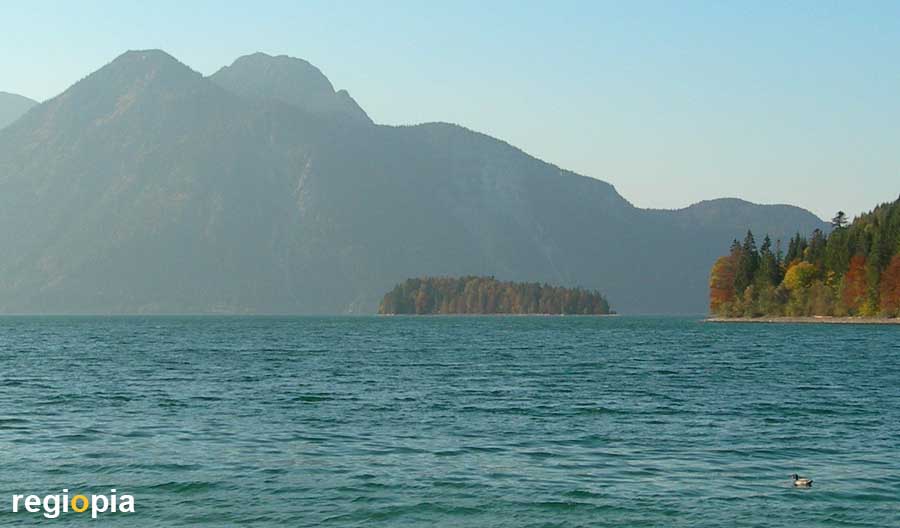
Walchensee
If you drive up the winding road from Kochel am See to the Walchensee, you reach another world. Up here you are suddenly surrounded by magnificent nature and almost alone during the week. The Walchensee lies at an altitude of 800 m and is approximately 16.5 km² in size. The maximum depth is 190 m. The lake is almost completely surrounded by forest and high mountains. The town of Walchensee is located on a small bay, here you will find guest houses and restaurants right on the water. There is also a cable car that goes up to the 1,600 m high mountain Herzogstand (see link). The village of Urfeld consists of a few scattered houses on the northern edge of the lake.
If you follow the country road 11 south, you come to the Mittenwald ski area. If you drive north from the lake, you come to the Kochelsee, which is connected to the Walchensee via a hydroelectric power station.
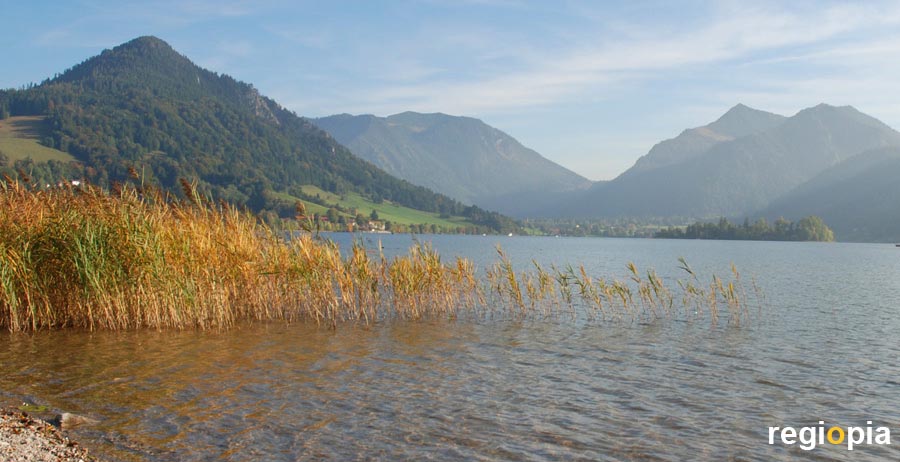
Schliersee
The Schliersee, located around 50 km south of Munich, also offers a beautiful Alpine panorama in the background. The Schliersee is relatively small with a water area of just over 2 km². The lake is around 2.5 km long and around 1 km wide. Ships operate on the lake, which also head for the island of Wörth. The Markus Wasmeier open-air museum is located at the southern end of the lake. The alpine village was founded by a famous skier. It has developed into a popular tourist destination with restaurants. The Slyrs distillery, which produces single malt whiskey, is located in Neuhaus. On a guided tour you can learn about the whiskey manufacturing process.
Anyone heading south for about 5 kilometers will come to the Spitzingsee. The alpine lake lies at an altitude of 1084 m and is a popular ski area in winter, in summer you can hike the small lake on a circular route.
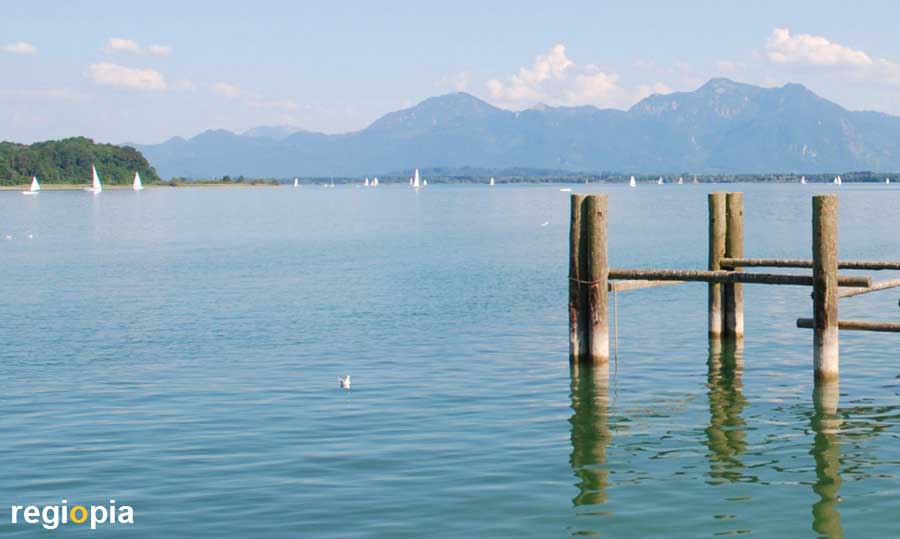
Chiemsee
Lake Chiemsee is the largest lake in Bavaria and offers its islands a popular leisure destination in the vicinity of Munich. With the Fraueninsel and Herren-Chiemsee Castle, the lake has top sights to offer. The Chiemsee is the third largest lake in Germany with an area of almost 80 km² after Lake Constance (536 km²) and the Müritz (112 km²). The largest island in the Chiemsee is the Herreninsel with the royal palace, the Fraueninsel with the Frauenwörth Abbey is significantly smaller. There are several ports from which passenger ships travel to the islands. The port of Prien am Chiemsee is the closest from Munich and can also be reached by train. Other ports are Gstadt, Seebruck, Pfaffing and Feldwies. The port of Gstadt is the closest to the islands.
Attractions in the vicinity of Munich
ads
Munich Travel Guide
ads


